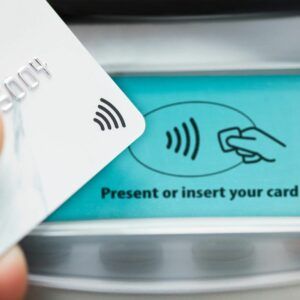Contactless Payments Can Boost Retail Industry

The COVID-19 pandemic has forced Americans to change their behavior in order to protect their communities, loved ones, and themselves. Increasingly, consumers are relying on technology, such as contactless payments, to support their needs and help them maintain a sense of normalcy during this unprecedented time.
For merchants and their customers, now is a good time to learn about contactless payments which require less physical interaction and are just as secure as EMV. This technology will help keep both merchants and consumers safe while allowing businesses to not only stay up and running, but flourish in the long term.
What Exactly are Contactless Payments?
Contactless payments refer to digital payments that use technology to securely communicate a customer’s payment information to a merchant without any physical contact, unlike handing over cash or multiple people touching a credit card. It is easy, secure, and nearly instant.
If a credit or debit card is able to make contactless payments, it should have the ![]() symbol on the front or back of the card. This means that consumers can simply (and securely) “tap” their card or their mobile device to a contactless-enabled point-of-sale (POS) terminal to pay for goods and services without ever touching it.
symbol on the front or back of the card. This means that consumers can simply (and securely) “tap” their card or their mobile device to a contactless-enabled point-of-sale (POS) terminal to pay for goods and services without ever touching it.
Virtually every modern smartphone – including all new iPhones and most Android devices – can also make contactless payments. Smartphones use apps called mobile wallets to securely store and transmit customers’ payment data. The most popular mobile wallets include Apple Pay, Google Pay, and Samsung Pay that come pre-installed on new devices from those manufacturers. Consumers can opt-in to using these services easily, and they just need a participating bank to verify the card prior to using their digital wallet for purchases.
How Do Contactless Payments Work?
Contactless payments use a signal to transmit payment data to a terminal. EMV contactless-enabled credit cards use radio-frequency identification technology, or RFID. The technology in mobile phones and other smart devices that facilitates this transmission is called near-field communication or NFC. Contactless devices are credit and debit cards, smartphones, and wearable smart devices like smart watches and rings. These smart devices have antennas in them that transmit payment data directly to the terminal when the device is placed near one with an RFID or NFC receiver.
How Do Merchants Start Accepting Contactless Payments?
If you accept EMV chip cards, then you can most likely accept contactless payments as well. Millions of terminals, updated during the October 2015 EMV liability shift, offer both contact and contactless payment options that customers and merchants can take advantage of.
If your point-of-sale terminal has this symbol on it, ![]() , it is already NFC (or near-field communication) capable which means it should be able to accept contactless payments via card or smart device. Many terminals will also indicate on their on-screen prompts if they can process contactless payments. Look for the word “tap” on the terminal screen – this means that contactless payments are accepted.
, it is already NFC (or near-field communication) capable which means it should be able to accept contactless payments via card or smart device. Many terminals will also indicate on their on-screen prompts if they can process contactless payments. Look for the word “tap” on the terminal screen – this means that contactless payments are accepted.
If you are a merchant that has the ability to accept contactless payments, now is the time to start educating your customers on the benefits of this technology and how it can help them purchase from you during a time when we are all asked to keep our distance.
And if you have not enabled contactless payments for your business, reach out to your payment processor to see how you can activate contactless technology!
Learn About i3 Commerce Technology’ Contactless Solutions Today:
Contact us online or call 1-800-621-8931.
Subscribe to Card Talk
Our monthly newsletter delivers the latest payments news straight to your inbox
